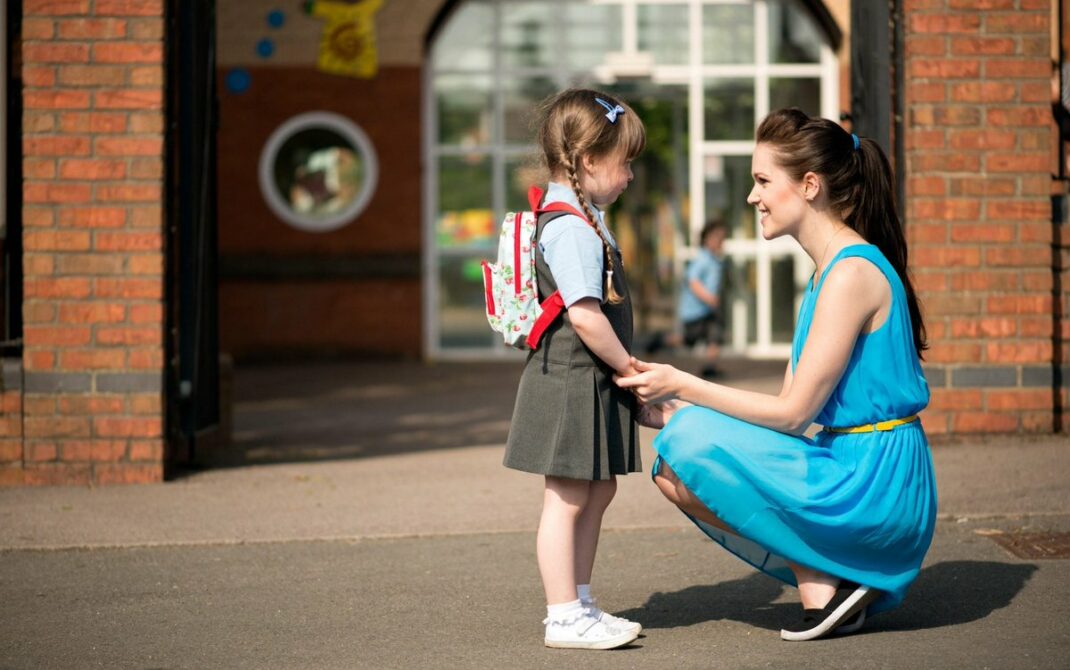Introduction
The back-to-school season is an exciting time for children as they prepare to embark on a new academic year. However, the year 2020 presents unique challenges due to the COVID-19 pandemic. In this comprehensive guide, we will provide valuable tips and strategies to help parents and caregivers get their kids ready to go back to school safely and smoothly.
Section 1 Preparing for a Safe Return
1.1 Stay Informed
Stay updated with the latest information and guidelines provided by local health authorities and the school district. Understand the safety protocols and measures implemented by the school to ensure a safe learning environment for students.
1.2 Communicate with the School
Reach out to the school to gather information about their specific plans for the upcoming school year. Inquire about class schedules, transportation arrangements, and any modifications to daily routines. This will help you prepare your child and set realistic expectations.
1.3 Establish Healthy Habits
Emphasize the importance of practicing good hygiene habits to prevent the spread of germs. Teach your child proper handwashing techniques and encourage regular handwashing throughout the day. Discuss the importance of wearing masks, maintaining physical distance, and avoiding unnecessary touching.
1.4 Create a Safe Space at Home
Designate an area in your home where your child can study and complete their schoolwork. Ensure the space is free from distractions and has all the necessary supplies, such as a desk, chair, adequate lighting, and storage for school materials. This will help create a conducive learning environment.
Section 2 Emotional Preparation
2.1 Address Concerns and Anxieties
Talk to your child about their feelings and concerns regarding going back to school during the pandemic. Address any anxieties they may have and provide reassurance. Validate their emotions and let them know that it’s normal to feel a bit nervous, but that the school is taking precautions to keep everyone safe.
2.2 Foster Positive Attitudes
Encourage a positive mindset about returning to school. Highlight the exciting aspects of seeing friends, engaging in learning, and the opportunities for growth and development. Discuss the importance of adapting to changes and being resilient during challenging times.
2.3 Establish Routines
Gradually reintroduce school routines a few weeks before the school year starts. Set regular wake-up and bedtime schedules to ensure your child gets adequate rest. Reestablish daily routines such as mealtimes, getting dressed, and engaging in physical activity. This will help ease the transition and create a sense of normalcy.
2.4 Encourage Open Communication
Create an environment where your child feels comfortable discussing their thoughts and concerns. Encourage them to express their feelings and actively listen to their perspectives. Address any questions they may have and provide honest and age-appropriate answers.
Section 3Academic Readiness
3.1 Review and Refresh Skills
Take time to review key academic concepts and skills from the previous school year. This will help your child feel more confident and prepared for the upcoming grade level. Focus on subjects like math, reading, and writing. Use online resources, educational apps, or workbooks to reinforce learning.
3.2 Set Goals
Help your child set academic goals for the upcoming school year. Encourage them to think about what they want to achieve and how they can work towards those goals. Break down larger goals into smaller, manageable tasks to provide a sense of accomplishment along the way.
3.3 Create a Study Schedule
Work with your child to establish a study schedule that includes dedicated time for homework, reading, and studying. Consider their individual preferences and energy levels when determining the most effective study times. Ensure they have a quiet and comfortable space to concentrate.
3.4 Foster a Love for Learning
Instill a love
for learning in your child by creating a supportive and engaging environment. Encourage them to explore their interests and pursue topics they are passionate about. Provide opportunities for hands-on learning, such as experiments, projects, or creative activities. Show enthusiasm for their achievements and celebrate their progress.
Section 4 Social and Emotional Well-being
4.1 Connect with Friends
Facilitate opportunities for your child to connect with their friends, even if it’s through virtual means. Encourage regular communication, whether through video calls, online games, or socially distanced outdoor activities. Social interactions are vital for their emotional well-being and can help alleviate feelings of isolation.
4.2 Support Emotional Resilience
Teach your child coping strategies to manage stress and emotions. Encourage them to express their feelings through journaling, art, or engaging in physical activities. Foster a supportive environment where they can discuss any challenges they may face and help them develop problem-solving skills.
4.3 Encourage Physical Activity
Physical activity is crucial for both physical and mental well-being. Encourage your child to engage in regular exercise or participate in extracurricular activities that promote movement. This can include activities such as walking, biking, dancing, or joining virtual exercise classes.
4.4 Practice Self-Care
Teach your child the importance of self-care and self-compassion. Encourage them to engage in activities that promote relaxation and stress relief, such as deep breathing exercises, mindfulness practices, or engaging in hobbies they enjoy. Promote healthy sleep habits and ensure they have enough downtime to recharge.
Section 5 Safety Measures
5.1 Reinforce Health and Safety Protocols
Review and reinforce the importance of following health and safety protocols established by the school and health authorities. Teach your child proper mask-wearing, handwashing, and respiratory etiquette. Discuss the significance of physical distancing and avoiding close contact with others.
5.2 Pack Essentials
Ensure your child has a well-equipped backpack that includes essential items such as masks, hand sanitizers, tissues, and a refillable water bottle. Teach them the importance of using these items responsibly and encourage regular hand sanitization throughout the day.
5.3 Stay Updated
Stay informed about any updates or changes in school policies related to the pandemic. Follow communication from the school and stay in touch with teachers and administrators to ensure you have the most up-to-date information. Be prepared to adapt and adjust plans as necessary.
Conclusion
Preparing your child to go back to school in 2020 requires careful planning, open communication, and an emphasis on safety and well-being. By following the tips and strategies provided in this comprehensive guide, you can help ensure a smooth and positive transition for your child. Remember to prioritize their emotional and academic readiness, reinforce safety measures, and maintain open lines of communication with your child, their teachers, and the school. Together, we can navigate the challenges of the 2020 school year and support our children’s continued growth and success.
- How to Use Delta 8 Disposables - July 20, 2023
- Getting Kids Ready to Go Back To School In 2020 - June 21, 2023

